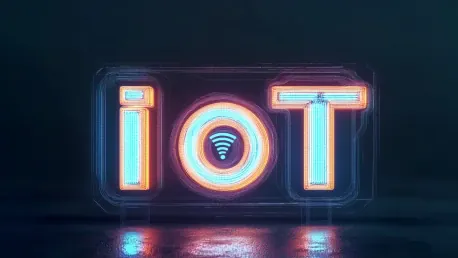
How IoT is Changing the Way We Live
How the Internet of Things (IoT) is Fundamentally Changing the Way We Live
Imagine your alarm clock not only waking you up but also signaling your coffee maker to start brewing and your thermostat to adjust to the perfect morning temperature. This isn’t a scene from a sci-fi movie; it’s the reality for millions, thanks to the Internet of Things (IoT).
IoT refers to the vast network of physical objects—”things”—embedded with sensors, software, and other technologies to connect and exchange data with other devices and systems over the internet. From ordinary household items to sophisticated industrial tools, IoT is creating a seamlessly connected world that is fundamentally changing the way we live, work, and interact with our environment.
1. The Smart Home: A Hub of Efficiency and Convenience
The most visible impact of IoT for many is in the home. Our living spaces are becoming intelligent, responsive environments.
-
Convenience & Control: Smart speakers like Amazon Echo and Google Nest act as central hubs, allowing you to control lights, locks, and appliances with your voice or from your smartphone.
-
Energy Efficiency: Smart thermostats like Nest Learning Thermostat learn your schedule and preferences to optimize heating and cooling, reducing energy waste and utility bills. Smart plugs can cut power to devices in standby mode.
-
Security & Peace of Mind: Smart doorbells with cameras, motion-sensor lights, and connected security systems allow you to monitor your home from anywhere in the world, providing unparalleled security and peace of mind.
2. Smarter Cities: Building More Livable Urban Spaces
IoT is transforming urban infrastructure into intelligent ecosystems, creating what are known as Smart Cities.
-
Intelligent Traffic Management: Sensors monitor traffic flow in real-time, adjusting signal timings to reduce congestion and improve commute times.
-
Efficient Waste Management: Smart bins equipped with sensors signal when they are full, allowing waste collection services to optimize their routes, saving fuel and reducing overflowing litter.
-
Public Safety & Utilities: Connected sensors can monitor air and water quality, detect leaks in water mains, and intelligently control street lighting to enhance public safety while saving energy.
3. A Revolution in Personal Health & Wellness
Wearable IoT devices are putting individuals in charge of their health like never before.
-
Fitness Tracking: Devices like Fitbit and Apple Watch track steps, heart rate, sleep patterns, and calories burned, providing data to help users make healthier lifestyle choices.
-
Proactive Healthcare: Advanced wearables can perform an ECG, detect falls, and monitor blood oxygen levels. This data can be shared with doctors for remote patient monitoring, enabling early intervention and personalized care, especially for the elderly or those with chronic conditions.
4. The Industrial Internet of Things (IIoT): A New Era for Business
In the industrial sector, known as the IIoT, the impact is driving the “Fourth Industrial Revolution” or Industry 4.0.
-
Predictive Maintenance: Sensors on machinery can predict equipment failure before it happens, scheduling maintenance only when needed and preventing costly downtime.
-
Optimized Supply Chains: IoT sensors track goods from manufacture to delivery, providing real-time data on location, temperature, and handling. This ensures product quality and creates hyper-efficient logistics.
-
Enhanced Worker Safety: Wearable devices on factory floors or construction sites can monitor workers’ vital signs and environmental hazards, alerting them to potential danger.
5. Smarter Agriculture: Feeding a Growing Planet
IoT is revolutionizing farming, making it more data-driven and efficient—a concept known as precision agriculture.
-
Resource Management: Sensors in fields monitor soil moisture levels, allowing for automated, precise irrigation only when and where needed, conserving water.
-
Crop Monitoring: Drones equipped with cameras and sensors can survey large fields, providing data on crop health and identifying pest infestations or nutrient deficiencies early.
Challenges and The Road Ahead
With great connectivity comes great responsibility. The widespread adoption of IoT brings challenges that must be addressed:
-
Security & Privacy: With billions of connected devices, the potential for data breaches and cyberattacks increases. Robust security protocols are essential.
-
Data Overload: The sheer volume of data generated requires powerful analytics to turn it into actionable insights.
-
Interoperability: Ensuring devices from different manufacturers can communicate seamlessly is crucial for a truly connected ecosystem.
An Inevitably Connected Future
The Internet of Things is weaving a digital nervous system through the fabric of our world. It is making our lives more convenient, our cities more efficient, our industries more productive, and our health management more proactive. While challenges remain, the trajectory is clear. IoT is not just a technological trend; it is a fundamental shift towards a more connected, intelligent, and responsive world, and it is changing the way we live, one device at a time.





